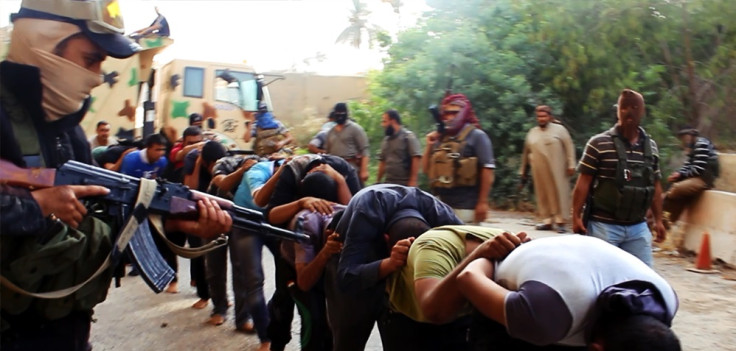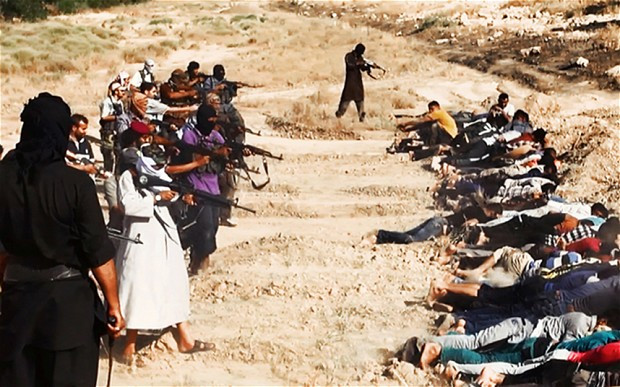Iraq Crisis: Are Isis Execution Photos Fake?

Gruesome pictures posted on Twitter by militants from the Islamic State of Iraq and the Levant (Isis) may not be authentic, according to human rights activists.
Isis, which has captured several key cities across Iraq in a brutal insurgency which began last week, posted several pictures purportedly portraying the abduction and killing of government soldiers.
The pictures appear to show masked Isis fighters loading captives into flatbed trucks before taking them to a shallow ditch, forcing them to lay face-down with their hands tied behind their backs. The final images show the bodies of the captives soaked in blood after being shot.
Isis captioned the photos with the claim that "hundreds have been liquidated", and boasted on a militant website that the horrific images provide evidence that 1,700 Iraqi government soldiers have been killed by Sunni fighters. Meanwhile Iraq's chief military spokesman, Lt. Gen. Qassim al-Moussawi, confirmed the photos' authenticity.
Moussawi also told AP that an analysis of the images by military experts showed that about 170 soldiers were executed by militants after their capture.
However Erin Evers, Human Rights Watch researcher in Iraq said: "We're trying to verify the pics, and I am not convinced they are authentic.
"As far as ISIS claiming it has killed 1,700 people and publishing horrific photos to support that claim, it is unfortunately in keeping with their pattern of commission of atrocities, and obviously intended to further fuel sectarian war," he said.
Reports of mass executions in areas seized by Isis in Iraq have been confirmed by US and local officials.
The New York Times reported that local residents in Tikrit, the hometown of the late dictator Saddam Hussein, saw hundreds of Iraqi military personnel captured when they tried to escape. "Those who were Sunnis were given civilian clothes and sent home; the Shiites were marched and trucked off to the grounds of Saddam Hussein's old palace in Tikrit, where they reportedly were executed," reported the paper.
Most of the men in the pictures are in civilian clothes, suggesting that Isis captured soldiers as they were trying to flee.
Some ask Y soldiers are wearing civilian clothes? ISIS themselves said they caught #Iraq soldiers trying 2 escape area in civilian clothes
— Jenan Moussa (@jenanmoussa) June 14, 2014
The Times of London's deputy editor Elizabeth Orcutt also assessed the authenticity of the graphic pictures. She claims that the photographs are of high quality compared to the usually poorer quality derived from still taken from a video footage.
"The quality of these images raises doubts: the colour seems too good, the quantity of pixels is above expectation and exposure is accurate," she wrote. The composition of the images also suggests that the maker "had some kind of visual training in making pictures and editing them". "We should be doubtful about the provenance of the images," she concluded.

© Copyright IBTimes 2025. All rights reserved.






















